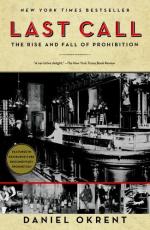|
This section contains 552 words (approx. 2 pages at 300 words per page) |

|
It was not long before even die-hard drys could see that Prohibition was failing. The amount of crime and political corruption seemed to increase every year. The number of speakeasies and liquor outlets was multiplying despite the increased efforts of Prohibition authorities. With no licensing hassles, everybody could become a bootlegger. A New York newspaper assigned a team of reporters to find out how easy it was to find liquor in Manhattan. They published the following list of sources for illegal drink: "Dancing academies, drugstores, delicatessens, cigar stores, confectioners, soda fountains, behind partitions of shoeshine parlors, back rooms of barbershops, from hotel bellhops, from hotel headwaiters, night clerks, in express offices, in motorcycle delivery agencies, paint stores, malt shops, cider stubes, fruit stands, vegetable markets, groceries, smoke shops, athletic clubs, grill rooms, taverns, chophouses, importing firms, tearooms, moving-van companies, spaghetti houses, boarding houses...
|
This section contains 552 words (approx. 2 pages at 300 words per page) |

|




